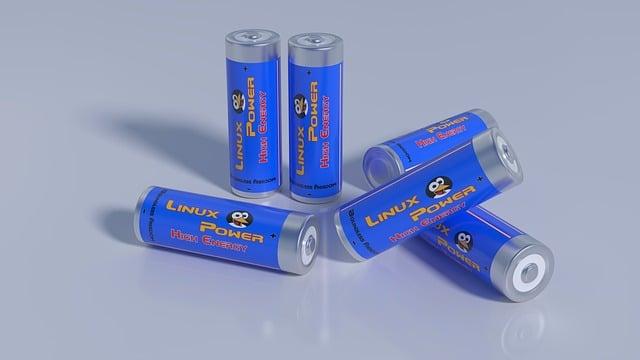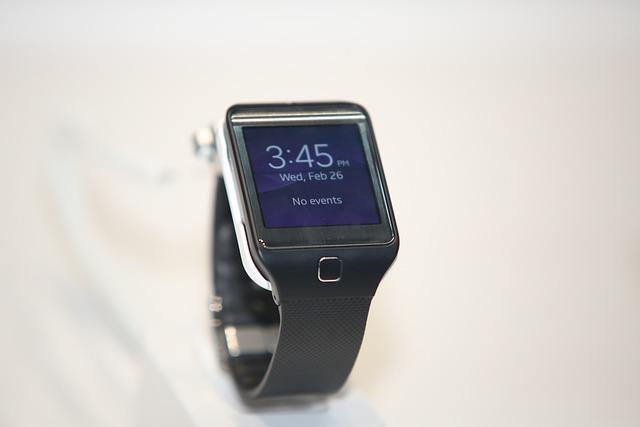In an era where our lives are intricately woven with technology, smart devices have emerged as indispensable companions, promising seamless connectivity and functionality at our fingertips. However, behind the sleek designs and compelling marketing lies a crucial yet often overlooked aspect: battery life. As we become increasingly reliant on smartphones, tablets, and wearable tech, the question of how long these devices can truly hold a charge becomes paramount. What manufacturers often tout as “all-day performance” may not be the reality for everyday users. This article delves into the real battery life of smart devices—unveiling the factors that influence performance, examining the discrepancies between manufacturer claims and consumer experiences, and offering insights to help you navigate this electrifying realm with informed expectations. Join us as we illuminate the complexities of battery life, empowering you to make smarter choices in a world where power is everything.
Understanding Battery Testing Standards and Their Limitations
In the realm of battery performance, testing standards serve as the benchmark against which manufacturers evaluate their products. However, these standards often fail to encompass the full spectrum of real-world usage scenarios. For instance, tests may prioritize optimal conditions, such as constant temperature or specific charging cycles, which rarely align with the varied and unpredictable environments in which consumers actually use their devices. This disconnect can lead to a significant disparity between advertised battery life and actual performance, ultimately influencing purchasing decisions based on potentially misleading data.
Moreover, various testing protocols focus on key parameters such as capacity, cycle life, and discharge rates, yet often overlook critical factors like temperature fluctuations, application load, and how different features of smart devices interact to consume battery life. Some common limitations include:
- Temperature Sensitivity: Batteries are often tested in controlled environments, ignoring how extreme heat or cold can affect performance.
- Software Influence: Background processes and updates aren’t usually considered, which can significantly drain battery life.
- Usage Patterns: Standardized tests may not reflect varied user behaviors, like gaming or video streaming, which are significant in daily use.
The result is a potential disconnect between manufacturer specifications and user experiences. This gap can lead to dissatisfaction and confusion among consumers when they find that their devices don’t live up to the promises made by manufacturers.
Everyday Usage vs. Laboratory Conditions: The Real Discrepancy
When it comes to the battery life of smart devices, there exists a stark contrast between what users experience during everyday usage and the ideal conditions presented in laboratory testing. Manufacturers often showcase impressive battery metrics achieved under controlled circumstances, where variables such as temperature, network connectivity, and app usage are meticulously managed. However, in real-world scenarios, devices seldom operate within these confines. The fluctuations of daily life, from background apps consuming power to changes in signal strength, can drastically alter battery performance, leading to a significant gap in expected versus actual usage time.
The inconsistency between laboratory conditions and typical usage highlights the importance of consumer awareness. Users should consider several factors when evaluating battery life claims, including:
- Usage Patterns: The type of applications run can heavily influence battery drain.
- Network Conditions: Poor signal can lead to increased battery consumption as devices work harder to maintain connections.
- Environmental Variables: Temperature extremes can affect battery efficiency and longevity.
A clearer understanding of these discrepancies can empower users to make informed choices. In the following table, we provide a comparison of theoretical battery life vs. realistic performance based on common usage scenarios:
| Usage Scenario | Theoretical Battery Life | Real-Life Battery Life |
|---|---|---|
| Video Streaming | 12 hours | 8 hours |
| Web Browsing | 14 hours | 6 hours |
| Gaming | 10 hours | 4 hours |
Unveiling Power Drains: Apps and Features That Consume More Than You Think
As we dive deep into the world of smart devices, it’s astonishing how some applications and features can secretly siphon away battery life. Users often underestimate the impact of background processes and high-demand functionalities. For instance, location services can keep GPS running endlessly, especially in mapping applications, while push notifications for social media apps perpetually ping your device, causing it to wake frequently. Other culprits that stealthily drain power include:
- High-resolution displays: Running at max brightness can consume significant energy.
- Streaming services: Continuous video playback requires immense battery capacity.
- Bluetooth and Wi-Fi: Always-on connections can diminish battery life rapidly.
Interestingly, even seemingly benign applications such as weather apps can deplete power more than expected. They frequently update and request data to keep users informed, leading to unnecessary battery consumption. To put this into perspective, consider the following table that compares the average battery drainage of various app categories:
| App Category | Average Battery Drain per Hour |
|---|---|
| Social Media | 15-20% |
| Video Streaming | 20-25% |
| Navigation | 30-35% |
| Gaming | 25-30% |
Maximizing Longevity: Practical Tips for Extending Your Device’s Battery Life
To truly maximize the longevity of your device’s battery, consider implementing a few simple yet effective habits. Adjusting your screen brightness is one of the easiest ways to prolong battery life; keeping it at a lower setting can yield visible improvements. Limiting background app activity also plays a crucial role. By revoking unnecessary permissions and disabling background refresh for apps that you don’t frequently use, you can dramatically decrease power consumption. Additionally, be mindful of your connectivity options—turning off Bluetooth and Wi-Fi when they’re not in use can prevent unnecessary battery drain.
Your device’s health can further benefit from regular maintenance. Consider disabling features like location services for apps that don’t require it. Understanding your charging habits is also vital; avoid letting your battery drop to 0% or charging it to 100% regularly. Instead, aim for a range between 20% and 80% for optimal performance. To illustrate the impact of these practices, refer to the table below:
| Practice | Impact on Battery Life |
|---|---|
| Lower Screen Brightness | +15-20% |
| Limit Background Apps | +10-25% |
| Disable Location Services | +10-30% |
| Avoid Full Charge Cycles | +5-15% |
Key Takeaways
In conclusion, understanding the real battery life of smart devices is an essential step for consumers navigating a market often clouded by marketing jargon and optimistic claims. While manufacturers may highlight their devices’ impressive features and capabilities, it’s crucial to peel back the layers and engage with the actual performance metrics that affect our daily lives. As we’ve explored, factors such as usage patterns, settings, and even environmental conditions can significantly influence battery longevity. By arming ourselves with this knowledge, we not only become more informed consumers but also set realistic expectations for our devices. As technology continues to evolve, let’s remain curious and vigilant, demanding transparency and accountability from the manufacturers who strive to shape our digital experience. After all, in a world increasingly powered by smart devices, informed choices will lead to a more sustainable and satisfying interaction with the technology we rely on.

